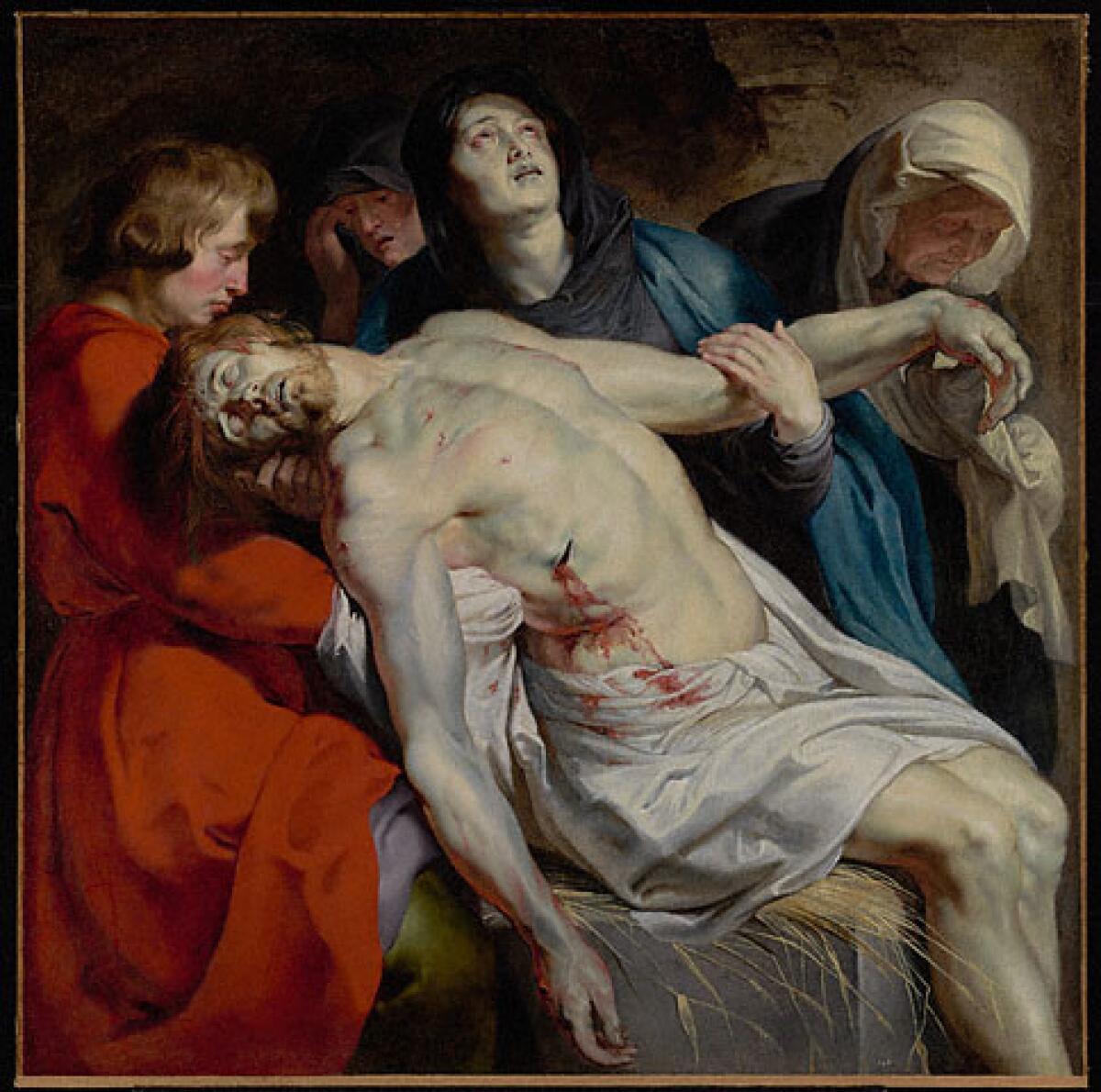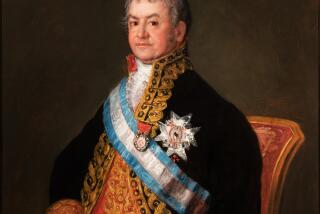Peter Paul Rubens was a brilliant sensationalist

Simply moving a painting from one place to another can dramatically alter the way you see it.
Take Peter Paul Rubens’ “The Entombment,” which he probably painted around 1612. Rubens was about 35 and just entering a period of great productivity, thanks to patronage from the court of Archduke Albert and his wife, Isabella, rulers of the Netherlands. Last week the painting was moved from the permanent collection galleries at the Getty Museum, where the canvas has resided for 20 years, to the museum’s temporary exhibition space.
For the time being it hangs at the entry to “Spectacular Rubens: The Triumph of the Eucharist,” a new show opening at the museum Tuesday. I stopped in to see it the other day as final installation was underway. The exhibition looks at Rubens’ designs for a startlingly innovative group of monumental woven tapestries, and I’ll have a review of the exhibition later.
But in its new location, the lush and sensual oil painting is a revelation. I’ve seen and admired “The Entombment” countless times before, but I’d never fully understood something fundamental about Rubens’ achievement in it.
Rubens complicates the otherwise obvious subject of the work, which shows the dead Christ being laid out for burial. Then he fuses that complication with a profound idea about painting. Here’s how.
Visual pyrotechnics are of course the calling card for all things Rubens, an artist for whom the sumptuous grandeur of vivacious color and lively brushwork was simply essential. The painting is just over four feet square, but it feels extravagant, even epic.
Yet, balancing the bluster, it’s also subtly nuanced — an evocation of the mystery central to the Roman Catholic Church. Christ’s massive body — dead, dead, dead — is a sickly bluish-greenish hue and dominates the picture. The open and profusely bleeding wound in his side is smack at the very center of the canvas.
The gash is the pivot around which all else turns, from the body’s lifeless limbs to the stunned and grieving figures of John the Evangelist and the Three Marys, who came to Jesus’ sepulcher. Together they form a dazzling visual pinwheel around the gory wound.
What I hadn’t really noticed before is this: There’s a second bloody gash. This one is made by the dead Christ’s slack and slightly open mouth.
It is bleeding nearly as profusely as the wound in his side, fluid crimson paint running in rivulets down his chin and shoulder to his limp right arm. Not just that, but the mouth’s crescent shape is a virtual mirror image of the bodily gash below. Like parentheses, Rubens has tied the two together in a visual rhyme.
“The Entombment” is obviously a meditation on the foundation of the Eucharist – on the magical transformation of bread and wine at Catholic communion into the body and blood of Christ. (That’s also the subject of the monumental tapestries in the Getty’s new exhibition.) That body and that blood hang heavily in Rubens’ picture, the focus of all its component parts.
But the formal visual echo between Christ’s open mouth and the gaping wound, which I hadn’t recognized before, takes the Catholic doctrine’s narrative one additional step: With the visual rhyme, the word is likened to flesh.
In this magnificently layered painting the artist is also speaking — and on multiple levels simultaneously. He made his word into flesh too. Rubens’ visual pyrotechnics elaborate a complex central tenet of a devout client’s faith, but the signs and symbols of art’s gauzy pictorial language become sensuous, material substance. The painting is a thing in itself.
Sensationalism and control — Rubens is just about as Baroque as Baroque art gets.
Twitter @KnightLAT
More to Read
The biggest entertainment stories
Get our big stories about Hollywood, film, television, music, arts, culture and more right in your inbox as soon as they publish.
You may occasionally receive promotional content from the Los Angeles Times.











